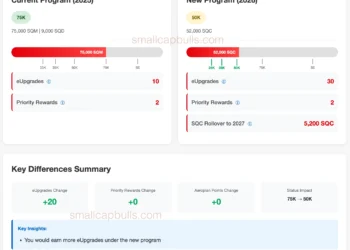BrainChip, a pioneering machine learning specialist listed on the ASX (BRN), has recently secured a significant contract valued at approximately $2.7 million with the US Air Force Research Laboratory (AFRL). This innovative partnership focuses on neuromorphic technology, specifically in the realm of radar signal processing, and is part of the Small Business Innovation Research (SBIR) program aimed at bolstering research and development initiatives by small enterprises to meet critical government objectives. By leveraging advanced algorithms on their neuromorphic hardware, BrainChip is set to enhance machine learning applications within military operations, showcasing the potential of low-power, high-performance computing solutions. The contract not only underscores the company’s commitment to pushing the boundaries of technology but also highlights the growing importance of neuromorphic engineering in defense and aerospace sectors. As BrainChip continues to expand its IP portfolio, the implications of this collaboration could redefine the landscape of cognitive communication in constrained environments.
In the realm of artificial intelligence, BrainChip stands out as a leader in developing advanced machine learning solutions. Their recent contract with the US Air Force Research Laboratory highlights the application of neuromorphic computing techniques within radar signal processing frameworks. By participating in the SBIR program, BrainChip is positioning itself to make significant contributions to both military and commercial sectors, especially in areas requiring efficient and effective processing capabilities. This initiative reflects a broader trend in which innovative technologies are being explored to enhance operational effectiveness in various fields, including aerospace and defense. The ongoing development of algorithms tailored for BrainChip’s unique hardware solutions illustrates a commitment to advancing machine learning applications that are both scalable and cost-efficient.
BrainChip’s Innovative Neuromorphic Technology
BrainChip is at the forefront of neuromorphic technology, which emulates the structure and function of the human brain to process information more efficiently. This revolutionary approach not only enhances machine learning applications but also offers significant advantages in various sectors, including defense and aerospace. By mimicking neural processes, BrainChip’s neuromorphic systems can perform complex computations at much lower power levels, making them ideal for SWaP-C (size, weight, power, and cost) constrained environments.
The recent contract with the US Air Force Research Laboratory (AFRL) for radar signal processing underscores the practical applications of BrainChip’s neuromorphic technology. Through this collaboration, the AFRL aims to leverage BrainChip’s unique processing capabilities to improve radar signal detection and analysis. This not only illustrates the growing relevance of neuromorphic systems in defense technology but also highlights the potential for future advancements in machine learning frameworks that can operate effectively in real-world scenarios.
Impact of Radar Signal Processing on Military Applications
Radar signal processing plays a critical role in military operations, providing the necessary tools for surveillance, threat detection, and situational awareness. The implementation of advanced algorithms on BrainChip’s neuromorphic hardware will enable faster and more accurate data processing, which is essential in mission-critical situations. This technology allows for real-time analysis and decision-making, thus enhancing the operational capabilities of the US Air Force.
The collaboration between BrainChip and the AFRL is particularly significant as it demonstrates the integration of cutting-edge technology in military applications. The SBIR program, which funds innovative research, supports small businesses like BrainChip in developing technologies that can transform military operations. As radar systems evolve, the need for efficient and low-power processing solutions becomes more pressing, making BrainChip’s advancements in this area not just beneficial, but essential.
The Role of the SBIR Program in Advancing Technology
The Small Business Innovation Research (SBIR) program plays a pivotal role in fostering innovation by providing funding for research and development projects that have the potential for commercialization. Through this program, BrainChip has secured a significant contract with the US Air Force, allowing them to further develop their neuromorphic radar signal processing capabilities. This funding is crucial for small businesses aiming to contribute to government missions while advancing their technological offerings.
By participating in the SBIR program, BrainChip not only enhances its technological capabilities but also gains access to invaluable partnerships with government agencies like the AFRL. Such collaborations can lead to the development of groundbreaking solutions that address specific military needs, thereby increasing the company’s visibility and credibility in the defense sector. The program exemplifies how government initiatives can stimulate innovation and support small businesses in achieving their research objectives.
Advancements in Machine Learning Applications
Machine learning applications have seen dramatic advancements over the past few years, and BrainChip’s neuromorphic technology is a testament to this evolution. By utilizing a framework based on Temporal Neural Networks (TENNs), BrainChip is pushing the boundaries of what machine learning can achieve, particularly in environments where traditional systems may falter. This approach allows for greater scalability and efficiency, positioning BrainChip as a leader in the next generation of machine learning solutions.
Moreover, the integration of BrainChip’s Akida technology with their latest advancements in neuromorphic processing paves the way for innovative applications across various industries. From autonomous vehicles to smart robotics, the implications of this technology are vast. As machine learning continues to evolve, BrainChip’s commitment to enhancing algorithm performance at ultra-low power consumption sets a new standard for what is possible in computational efficiency.
The Future of Neuromorphic Computing in Defense
Neuromorphic computing is poised to revolutionize the defense sector by providing advanced solutions for complex data processing challenges. As military operations become increasingly reliant on technology, the need for systems that can operate efficiently under constrained conditions is paramount. BrainChip’s work with the US Air Force exemplifies the potential of neuromorphic systems to enhance radar signal processing and other critical applications.
Looking ahead, the partnership between BrainChip and the AFRL could lead to significant breakthroughs in how military data is processed and analyzed. With ongoing research and development, neuromorphic technology may become integral to future defense strategies, enabling faster and more accurate decision-making in the field. This trajectory not only highlights the strategic importance of BrainChip’s innovations but also underscores the growing intersection of technology and military effectiveness.
BrainChip’s Strategic IP Portfolio Expansion
BrainChip’s expansion of its intellectual property (IP) portfolio is a significant move in establishing itself as a leader in the neuromorphic technology space. The introduction of aTENNuate into its framework enhances the capabilities of its Temporal Neural Networks (TENNs), allowing for more sophisticated algorithm development. This advancement not only strengthens the company’s competitive edge but also supports its mission to deliver high-performance computing solutions that meet the demands of various applications.
By continuously enhancing its IP portfolio, BrainChip is positioning itself to capitalize on emerging trends in machine learning and artificial intelligence. The integration of new technologies into their existing framework ensures that BrainChip remains at the forefront of innovation, enabling them to provide tailored solutions for diverse sectors, including defense, aerospace, and robotics. This strategic focus on IP development is crucial for sustaining long-term growth and maintaining relevance in a rapidly evolving technological landscape.
Collaboration with Aerospace and Defense Companies
BrainChip is currently exploring collaborations with aerospace and defense companies to fulfill its recent contract with the US Air Force. Establishing a subcontractor agreement will not only enhance BrainChip’s operational capabilities but also expand its reach within the lucrative defense market. By partnering with established firms in the aerospace sector, BrainChip can leverage their expertise to optimize the development of algorithms and applications that meet rigorous military standards.
Such collaborations are essential for BrainChip as they navigate the complexities of defense contracts and technological requirements. Working alongside experienced partners can facilitate knowledge transfer, enhance innovation, and ultimately lead to more effective solutions for radar signal processing and other military applications. This strategic move highlights BrainChip’s commitment to delivering high-quality, mission-critical technologies that support national security objectives.
The Financial Implications of the US Air Force Contract
Securing a contract worth approximately $2.7 million with the US Air Force is a significant milestone for BrainChip. This funding will support the research and development of neuromorphic radar signal processing technologies, allowing the company to further innovate in this critical area. The financial backing not only ensures the advancement of their projects but also provides a stable foundation for future growth and expansion in other sectors.
Moreover, the contract’s structure, which includes a fixed fee of approximately $1.2 million for collaborative algorithm development, ensures a steady income stream for BrainChip throughout the duration of the agreement. This stability is essential for maintaining operations and enabling continued investment in research and development. As BrainChip capitalizes on this opportunity, it sets the stage for further advancements that could position the company as a leader in neuromorphic technology within the defense industry.
The Importance of SWaP-C in Modern Technology
In the context of modern technology, SWaP-C (size, weight, power, and cost) is a critical consideration, particularly in fields like defense and aerospace. BrainChip’s focus on minimizing SWaP-C in their neuromorphic systems is crucial for ensuring that these advanced technologies can be deployed in environments where space and power resources are limited. This emphasis aligns with the needs of military applications, where operational efficiency is paramount.
By optimizing their radar signal processing solutions for SWaP-C constraints, BrainChip is not only enhancing the performance of their technology but also making it feasible for integration into various platforms, including drones, satellites, and ground vehicles. This adaptability is key to meeting the evolving demands of modern warfare and defense strategies, ensuring that BrainChip remains a pivotal player in the advancement of technological solutions for military applications.
Frequently Asked Questions
What role does BrainChip play in neuromorphic technology for radar signal processing?
BrainChip specializes in neuromorphic technology, which mimics the human brain’s functioning to enhance radar signal processing. Their recent $2.7 million contract with the US Air Force focuses on developing advanced algorithms that leverage this technology, demonstrating significant improvements in low-power, high-performance computing.
How does BrainChip’s partnership with the US Air Force benefit radar signal processing applications?
The partnership enables BrainChip to implement neuromorphic radar signal processing on mobile platforms, enhancing performance while minimizing system size, weight, power, and cost (SWaP-C). This collaboration illustrates the advantages of using BrainChip’s technology in mission-critical scenarios.
What is the SBIR program and how does it relate to BrainChip?
The Small Business Innovation Research (SBIR) program funds research and development projects by small businesses, like BrainChip, to support US government missions. BrainChip’s recent contract under this program focuses on advancing neuromorphic radar signal processing capabilities.
What are the key features of BrainChip’s Akida neural processor?
BrainChip’s Akida neural processor is designed for event-based technology, supporting incremental learning and high-speed inference. This processor excels in low power consumption compared to traditional neural network accelerators, making it ideal for applications in neuromorphic technology.
How does BrainChip’s technology improve cognitive communication in constrained platforms?
BrainChip’s neuromorphic technology enhances cognitive communication capabilities on SWaP-C constrained platforms such as military and aerospace applications. This technology provides improved performance with lower power requirements, making it suitable for critical operations in both commercial and government sectors.
What is aTENNuate and how does it relate to BrainChip’s advancements?
aTENNuate is a recent addition to BrainChip’s IP portfolio that expands their Temporal Neural Networks (TENNs) framework. This advancement complements the Akida IP and enhances the company’s ability to develop optimized algorithms for neuromorphic technology applications.
What are the expected outcomes of BrainChip’s contract with the US Air Force?
Under the $2.7 million contract, BrainChip aims to develop and optimize radar signal processing algorithms on their Akida 2.0 hardware. The collaboration is expected to yield significant advancements in low-power computing for radar applications, demonstrating the effectiveness of neuromorphic technology.
How does BrainChip’s equity capital raise impact its operations and contracts?
Following an equity capital raise of up to $25 million, BrainChip is well-capitalized, allowing the company to effectively fulfill its contract obligations with the US Air Force and engage in further research and development in the field of neuromorphic technology.
| Key Point | Details |
|---|---|
| Contract Value | Approximately $2.7 million with the US Air Force Research Laboratory. |
| Focus Area | Neuromorphic radar signal processing under the SBIR program. |
| Technology Used | Neuromorphic engineering mimicking human brain functions for processing information. |
| Platform Implementation | Radar signal processing on multiple mobile platforms, emphasizing SWaP-C (Size, Weight, Power, Cost). |
| CEO Statement | Partnership enhances radar signal applications, showcasing neuromorphic computing advantages. |
| IP Portfolio | aTENNuate and Akida IP support incremental learning and high-speed inference. |
| Algorithm Development | Developing and optimizing algorithms for Akida 2.0 hardware for better performance. |
| Cognitive Capabilities | Improved capabilities for SWaP-C constrained platforms in military and robotics. |
| Contract Duration | 12 months with a total compensation of approximately $2.7 million. |
Summary
BrainChip has made significant strides in neuromorphic computing by securing a $2.7 million contract with the US Air Force Research Laboratory. This partnership highlights BrainChip’s innovative approach in developing radar signal processing solutions, enhancing operational efficiency in critical applications. With its advanced technology, BrainChip is poised to transform the landscape of military and commercial robotics through enhanced cognitive capabilities while maintaining a focus on minimizing size, weight, power, and cost.













